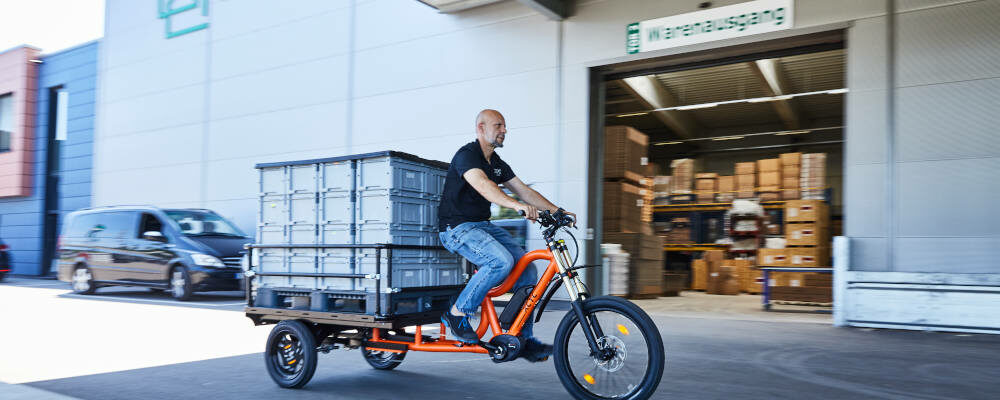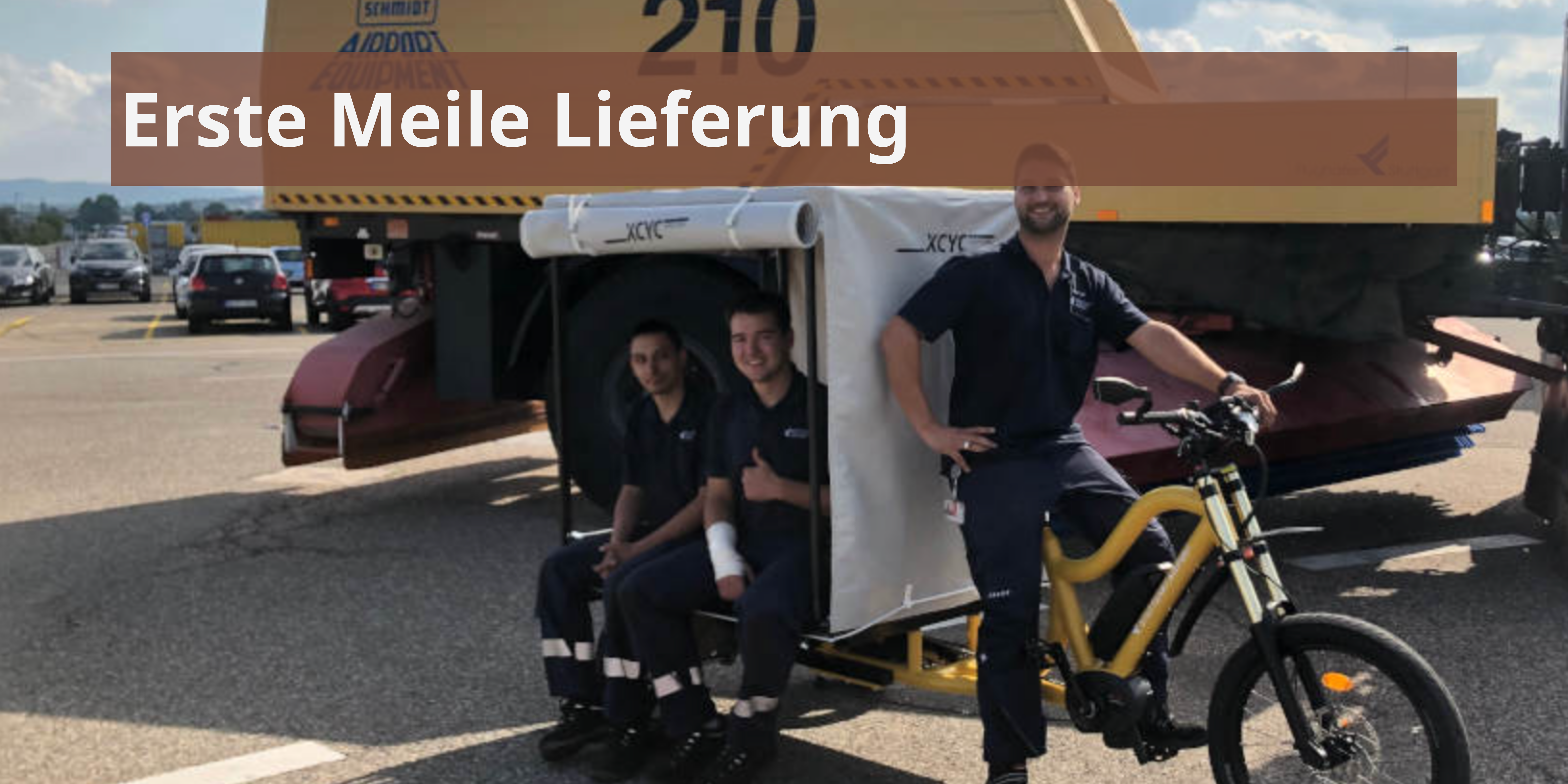First mile delivery
- Home
- E-bike knowledge
- Efficient first mile delivery
In large warehouses, industrial parks or production facilities, transportation over short distances plays an important role.
This is exactly what the first mile is all about: it describes the very first route that materials or products take in the company – for example, from incoming goods to the warehouse or from the storage area to production.
What often looks like a small step has a major impact on the entire process. Because if something doesn’t run smoothly here, the whole operation quickly grinds to a halt.
But what exactly is the first mile – and why is it worth taking a closer look at this part of logistics?
Table of Contents
What is the first mile delivery in warehouse operations?
First mile delivery refers to the very first transportation route within the supply chain – in other words, the moment when goods or materials start their journey from the warehouse or production site. In warehouse operations, this specifically means the transportation of goods within the warehouse or from there to the next logistics point.
This can involve various processes, such as:
- Internal goods movements within a large warehouse or production hall.
- Transportation of finished products from production to the dispatch station.
- Deliveries to industrial parks or other locations where goods are required for further processing or sale.
Why is the first mile so important?
The first mile is much more than just the starting point in internal transportation. It sets the pace for everything that follows. If this section runs smoothly, the rest of the supply chain usually functions without any problems. However, if there is a hitch here – for example due to long distances, poorly planned processes or unsuitable means of transport – this often has noticeable consequences: production is delayed, delivery deadlines are not met and costs increase unnecessarily.
Translated with www.DeepL.com/Translator (free version)
The so-called last mile delivery – i.e. the route to the customer – also has similar requirements: Speed, flexibility and reliability. If you are already smart in the first mile, you have the best prerequisites for making the rest efficient as well.
Challenges of the first mile in warehouse logistics
One thing is clear: if something goes wrong in the first mile, it has noticeable consequences for the entire company. But why is this actually the case? Why is this first step often so demanding – and what makes it so challenging in practice?
Time pressure and just-in-time requirements
Sometimes every second counts. Many companies rely on just-in-time deliveries, where materials have to arrive exactly when they are needed. Delays in the first mile can therefore quickly lead to production stoppages or bottlenecks, which in turn results in high costs.
High transport volumes in a limited space
Warehouses, production facilities and industrial parks are often highly frequented areas with narrow aisles and limited space. At the same time, large quantities of goods have to be moved every day – whether for loading production lines, onward transportation or internal relocation.
Sustainability requirements and emissions reduction
Many companies are faced with the challenge of reducing their carbon footprint without compromising efficiency. Especially in closed warehouse environments, but also in extensive industrial parks, low-emission transport solutions are required to minimize air pollution and noise pollution.
Driving license requirement restricts use
Many transport vehicles such as vans or forklifts may only be driven with a special driving license. This often leads to bottlenecks in everyday life: Not all employees in the company have the necessary driving license – and spontaneous assignments or fast transports become more complicated.


How cargo e-bikes make the first mile more efficient
-
They can also get through where larger vehicles cannot – e.g. between shelves, through yards or on narrow paths.
-
Can be used spontaneously, without a driving licence or complicated instruction.
-
Create more transport space than you might think – even pallets can be moved.
-
Cause no emissions and hardly any noise, which is a plus especially in halls.
-
Can be flexibly integrated into existing processes – from incoming goods to production.
Want to know exactly what this looks like in everyday operations – and how cargo e-bikes can relieve your first mile?
Then take a look at the details here:
Conclusion - How to turn a small step into a noticeable difference
The first mile has long been part of well-established processes in many companies – and it often works well. Nevertheless, it is worth checking from time to time whether there are simpler or more flexible ways.
Cargo e-bikes can be a useful addition, especially when it comes to short distances, spontaneous transportation or less effort in everyday life. For many companies, this can be a small step that noticeably reduces the workload.
Let us advise you without obligation on the possibilities and funding of a cargo e-bike from YouMo for your company.






